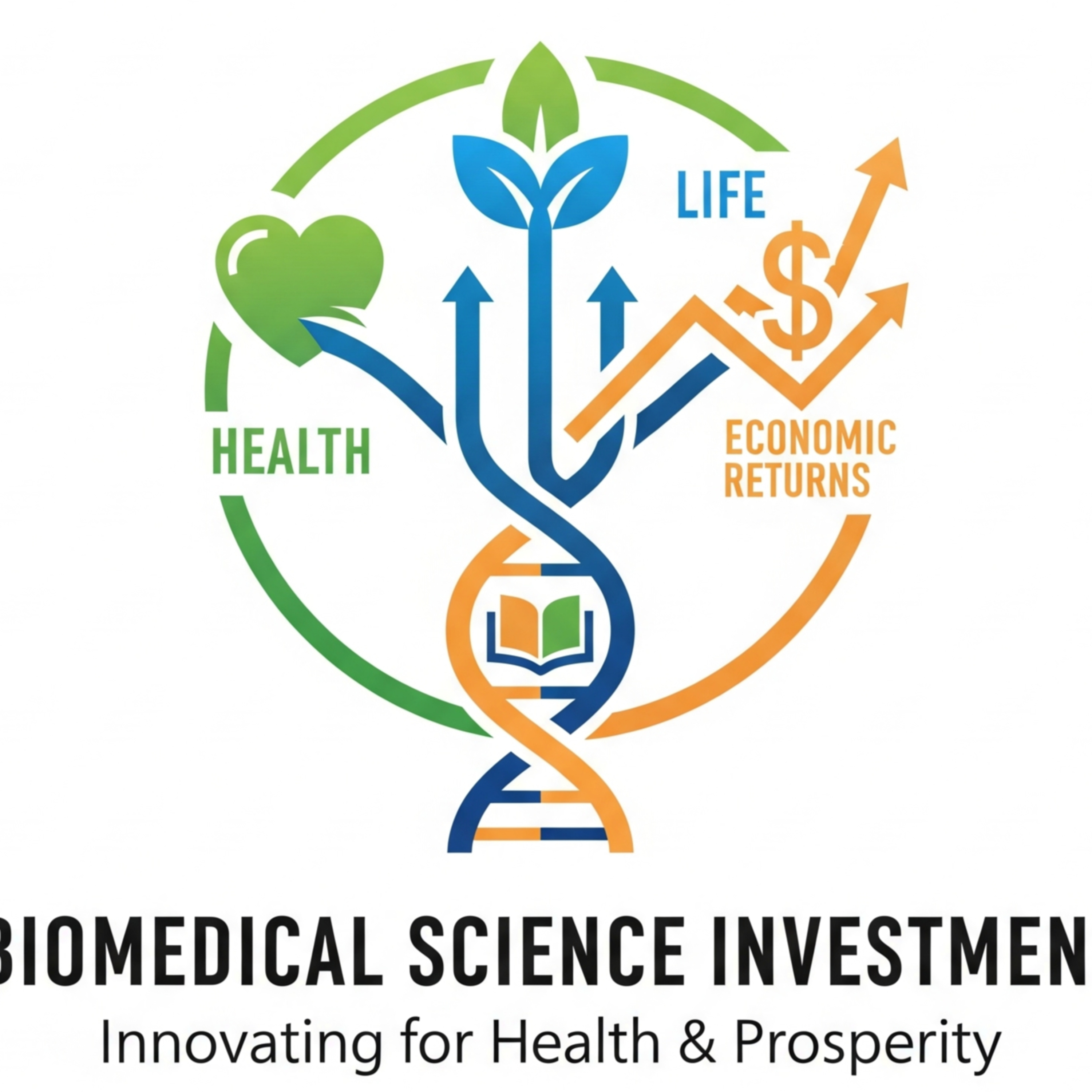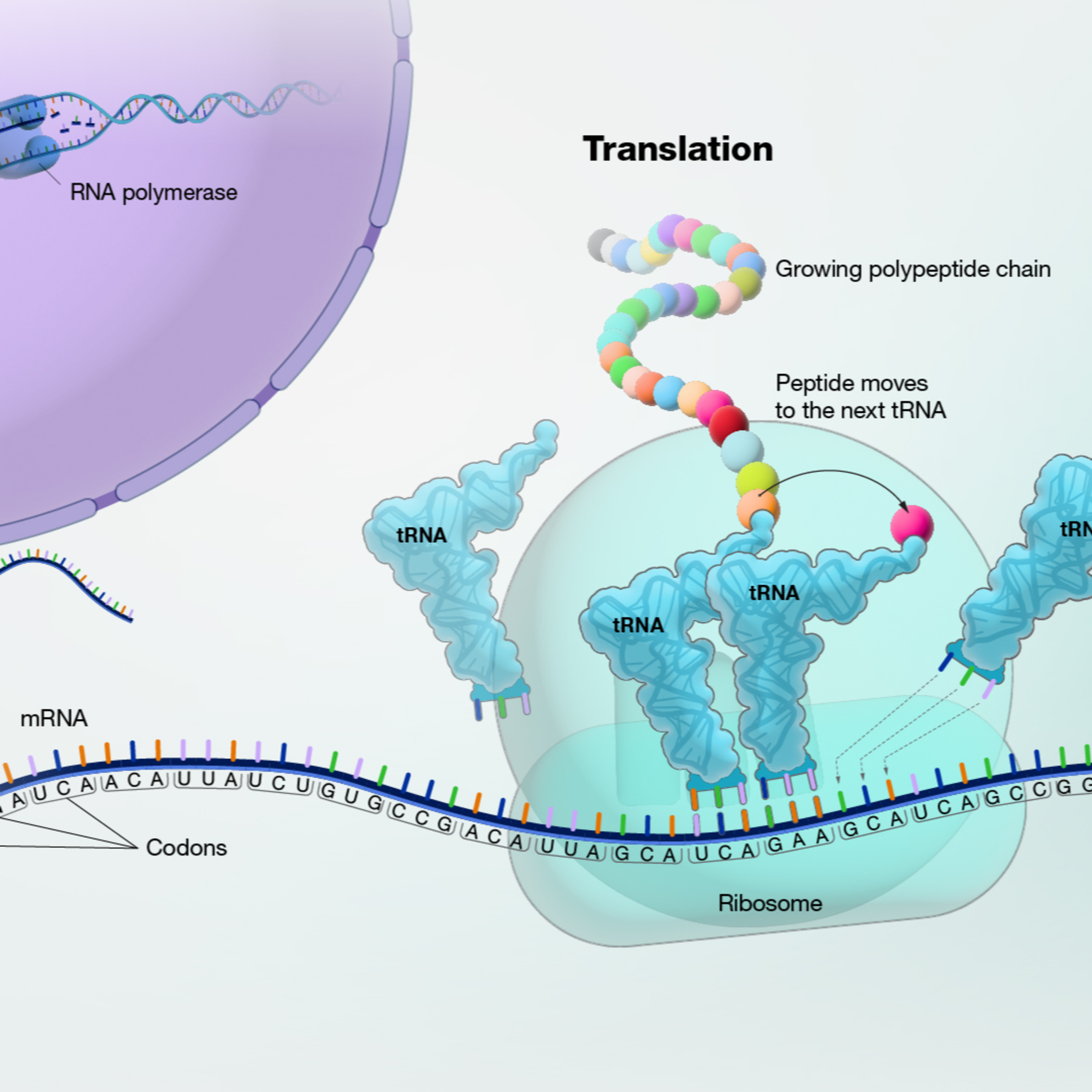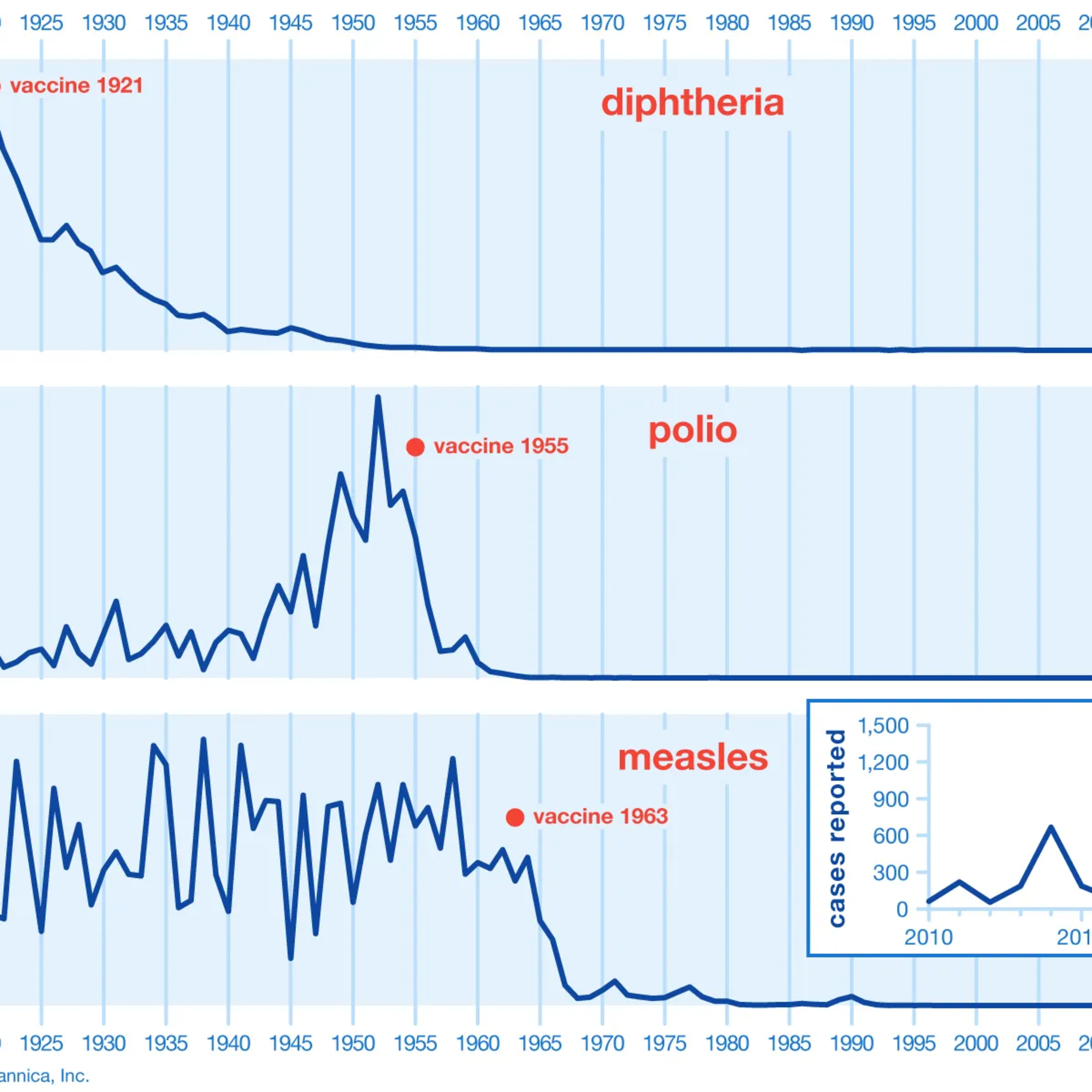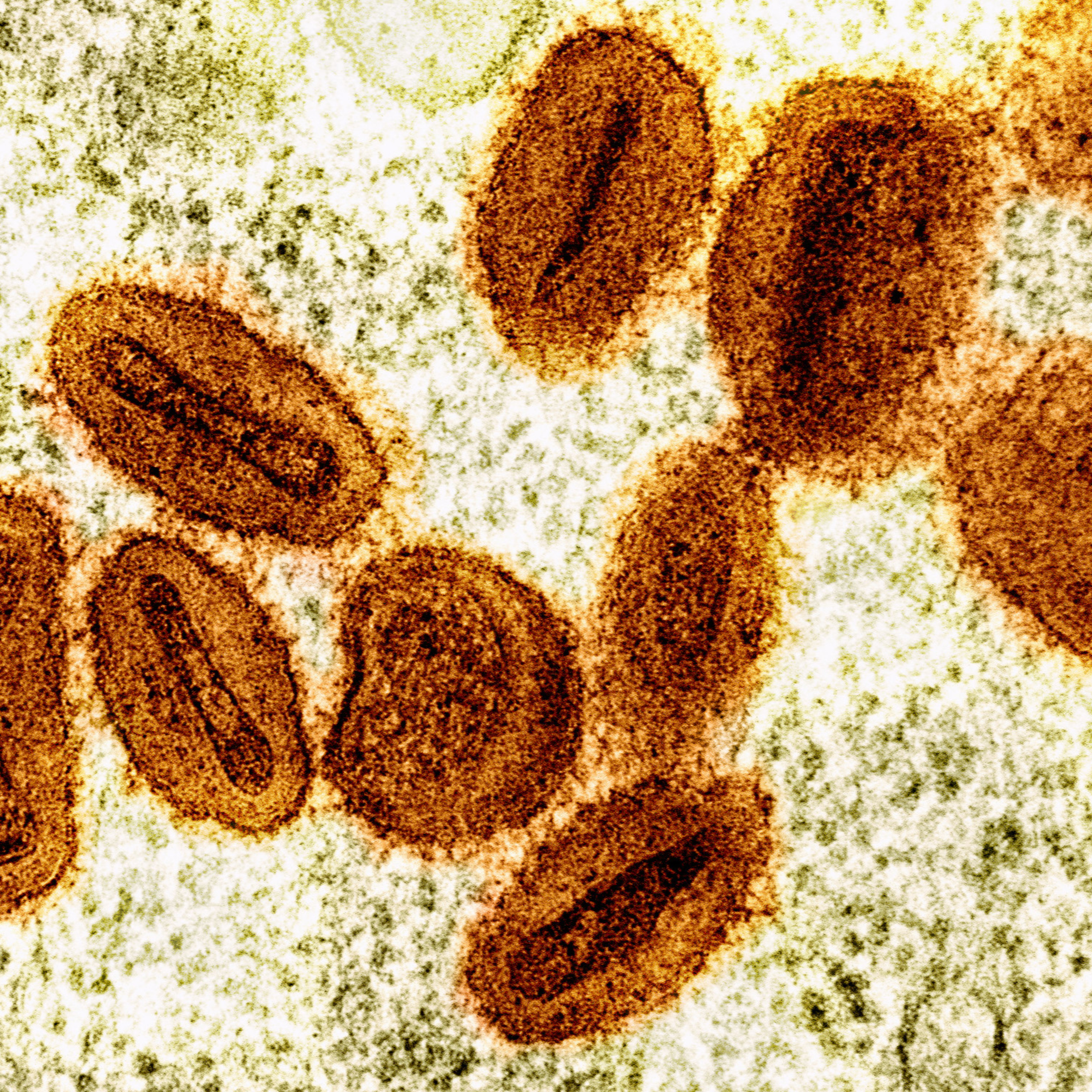Shows
 DrMcPharmaDrMcPharma ep. 27: Biomedical Investment: Health, Life, and Economic ReturnsInvestment in biomedical science in the United States, particularly through federal funding via the National Institutes of Health (NIH), offers significant advantages for both public health and the economy. This funding generates substantial economic activity and supports numerous jobs across the nation, while also leading to improved health outcomes, increased life expectancy, and a reduction in disease burden through breakthroughs in prevention, diagnosis, and treatment. The methods used to quantify these returns, such as economic impact modelling and health metrics like Quality-Adjusted Life Years (QALYs), acknowledges the inherent challenges in measuring such complex and long-term impacts, including difficulties in attribution and...2025-07-3129 min
DrMcPharmaDrMcPharma ep. 27: Biomedical Investment: Health, Life, and Economic ReturnsInvestment in biomedical science in the United States, particularly through federal funding via the National Institutes of Health (NIH), offers significant advantages for both public health and the economy. This funding generates substantial economic activity and supports numerous jobs across the nation, while also leading to improved health outcomes, increased life expectancy, and a reduction in disease burden through breakthroughs in prevention, diagnosis, and treatment. The methods used to quantify these returns, such as economic impact modelling and health metrics like Quality-Adjusted Life Years (QALYs), acknowledges the inherent challenges in measuring such complex and long-term impacts, including difficulties in attribution and...2025-07-3129 min DrMcPharmaDrMcPharma ep. 26. The Vaccine Revolution: From SmallPox to mRNAVaccination stands as one of humanity's most significant public health achievement, fundamentally altering the landscape of infectious diseases and preventing millions of deaths globally. This report delves into the specific journeys of five critical vaccines: influenza, Respiratory Syncytial Virus (RSV), SARS-CoV-2, varicella, and measles. Each represents a unique narrative of scientific discovery, persistent challenges, and remarkable breakthroughs that continue to shape our approach to global health security.The diseases covered herein range from long-standing endemic threats like measles and influenza to more recently recognized, yet highly impactful, pathogens such as RSV and SARS-CoV-2. Understanding their vaccine histories...2025-06-2850 min
DrMcPharmaDrMcPharma ep. 26. The Vaccine Revolution: From SmallPox to mRNAVaccination stands as one of humanity's most significant public health achievement, fundamentally altering the landscape of infectious diseases and preventing millions of deaths globally. This report delves into the specific journeys of five critical vaccines: influenza, Respiratory Syncytial Virus (RSV), SARS-CoV-2, varicella, and measles. Each represents a unique narrative of scientific discovery, persistent challenges, and remarkable breakthroughs that continue to shape our approach to global health security.The diseases covered herein range from long-standing endemic threats like measles and influenza to more recently recognized, yet highly impactful, pathogens such as RSV and SARS-CoV-2. Understanding their vaccine histories...2025-06-2850 min DrMcPharmaDrMcPharma ep. 25. Caffeine: The Mechanisms of a Cup of JoeThis scientific text explores the molecular pharmacology of caffeine in the human body, detailing how this widely consumed substance impacts physiological and neurological functions. It explains caffeine's absorption and metabolism, highlighting the role of the CYP1A2 enzyme and the formation of active metabolites like paraxanthine, theobromine, and theophylline, while also discussing individual metabolic variability. The primary mechanism of caffeine, adenosine receptor antagonism, is thoroughly described, including its structural mimicry of adenosine and subsequent effects on neurotransmitters like dopamine and norepinephrine. Finally, the document examines secondary molecular mechanisms that occur at higher caffeine concentrations, such as phosphodiesterase inhibition and intrace...2025-06-1723 min
DrMcPharmaDrMcPharma ep. 25. Caffeine: The Mechanisms of a Cup of JoeThis scientific text explores the molecular pharmacology of caffeine in the human body, detailing how this widely consumed substance impacts physiological and neurological functions. It explains caffeine's absorption and metabolism, highlighting the role of the CYP1A2 enzyme and the formation of active metabolites like paraxanthine, theobromine, and theophylline, while also discussing individual metabolic variability. The primary mechanism of caffeine, adenosine receptor antagonism, is thoroughly described, including its structural mimicry of adenosine and subsequent effects on neurotransmitters like dopamine and norepinephrine. Finally, the document examines secondary molecular mechanisms that occur at higher caffeine concentrations, such as phosphodiesterase inhibition and intrace...2025-06-1723 min DrMcPharmaDrMcPharma ep. 24. US Adult Immunizations: 2025 Comprehensive Guide1. Office of Disease Prevention and Health Promotion MyHealthFinder2. CDC Vaccines3. World in Data: Vaccines2025-06-0919 min
DrMcPharmaDrMcPharma ep. 24. US Adult Immunizations: 2025 Comprehensive Guide1. Office of Disease Prevention and Health Promotion MyHealthFinder2. CDC Vaccines3. World in Data: Vaccines2025-06-0919 min DrMcPharmaDrMcPharma ep. 23. Climate Change: A Global Health EmergencyPodcasts: https://creators.spotify.com/pod/profile/drmcpharma/Socials: https://linktr.ee/drmcpharmaWebsite: https://drmcpharma.comThe global health landscape is undergoing a profound transformation, driven by the escalating impacts of climate change, global warming, and the increasing frequency and intensity of extreme weather events. Far from being a distant environmental concern, climate change has emerged as an immediate and rapidly worsening public health emergency, with measurable and devastating consequences for human health and well-being worldwide. Authoritative reports from leading international bodies, including the World Health Organization (WHO), the Intergov...2025-06-081h 24
DrMcPharmaDrMcPharma ep. 23. Climate Change: A Global Health EmergencyPodcasts: https://creators.spotify.com/pod/profile/drmcpharma/Socials: https://linktr.ee/drmcpharmaWebsite: https://drmcpharma.comThe global health landscape is undergoing a profound transformation, driven by the escalating impacts of climate change, global warming, and the increasing frequency and intensity of extreme weather events. Far from being a distant environmental concern, climate change has emerged as an immediate and rapidly worsening public health emergency, with measurable and devastating consequences for human health and well-being worldwide. Authoritative reports from leading international bodies, including the World Health Organization (WHO), the Intergov...2025-06-081h 24 DrMcPharmaDrMcPharma ep. 22. MPXV: The Comprehensive Review of Mpox Virus Epidemiology, Pathophysiology, and TreatmentPodcasts: https://creators.spotify.com/pod/profile/drmcpharma/Socials: https://linktr.ee/drmcpharmaWebsite: https://drmcpharma.comThe History of Mpox Research1958: The monkeypox virus (MPXV) is first identified during two outbreaks of a pox-like disease in research monkey colonies in Copenhagen, Denmark.1968: Smallpox is officially eliminated in the Democratic Republic of Congo (DRC).1970: The first documented human case of mpox is recorded in a 9-month-old boy in the DRC, a region where smallpox had recently been eliminated.1970-Early 2022: Mpox cases are primarily reported from rural communities in Central and West Africa, with...2025-06-082h 02
DrMcPharmaDrMcPharma ep. 22. MPXV: The Comprehensive Review of Mpox Virus Epidemiology, Pathophysiology, and TreatmentPodcasts: https://creators.spotify.com/pod/profile/drmcpharma/Socials: https://linktr.ee/drmcpharmaWebsite: https://drmcpharma.comThe History of Mpox Research1958: The monkeypox virus (MPXV) is first identified during two outbreaks of a pox-like disease in research monkey colonies in Copenhagen, Denmark.1968: Smallpox is officially eliminated in the Democratic Republic of Congo (DRC).1970: The first documented human case of mpox is recorded in a 9-month-old boy in the DRC, a region where smallpox had recently been eliminated.1970-Early 2022: Mpox cases are primarily reported from rural communities in Central and West Africa, with...2025-06-082h 02 DrMcPharmaEp. 21. Receptor Theory Pharmacology: Corpora non agunt nisi fixata " (agents only work when they are bound)Corpora non agunt nisi fixata" (agents only work when they are bound)Prior to the mid-20th century, the field of pharmacology, while rich in empirical observation, operated with a limited understanding of the precise molecular mechanisms underpinning drug action. Many therapeutic agents were developed and utilized based on their observed physiological effects, often without a clear grasp of their cellular targets or the intricate pathways they influenced. Early pioneers like Paul Ehrlich, with his concept of "corpora non agunt nisi fixata" (agents only work when they are bound), and John Newport Langley, who...2025-05-2920 min
DrMcPharmaEp. 21. Receptor Theory Pharmacology: Corpora non agunt nisi fixata " (agents only work when they are bound)Corpora non agunt nisi fixata" (agents only work when they are bound)Prior to the mid-20th century, the field of pharmacology, while rich in empirical observation, operated with a limited understanding of the precise molecular mechanisms underpinning drug action. Many therapeutic agents were developed and utilized based on their observed physiological effects, often without a clear grasp of their cellular targets or the intricate pathways they influenced. Early pioneers like Paul Ehrlich, with his concept of "corpora non agunt nisi fixata" (agents only work when they are bound), and John Newport Langley, who...2025-05-2920 min DrMcPharmaEp. 20. The Culture of Academic Science Laboratories: An In-Depth AnalysisThe environment within an academic science laboratory is far more than a physical space equipped with instruments and reagents. It is a complex social ecosystem defined by its "lab culture." This culture represents the shared values, beliefs, attitudes, assumptions, and behaviors that dictate the daily functioning and interpersonal dynamics of a research group. It is the collective answer to "what we care about" within the lab, encompassing not only the pursuit of scientific knowledge but also the regard for people and relationships. For new principal investigators (PIs) or incoming lab members, this often "intangible" aspect of the laboratory environment...2025-05-2731 min
DrMcPharmaEp. 20. The Culture of Academic Science Laboratories: An In-Depth AnalysisThe environment within an academic science laboratory is far more than a physical space equipped with instruments and reagents. It is a complex social ecosystem defined by its "lab culture." This culture represents the shared values, beliefs, attitudes, assumptions, and behaviors that dictate the daily functioning and interpersonal dynamics of a research group. It is the collective answer to "what we care about" within the lab, encompassing not only the pursuit of scientific knowledge but also the regard for people and relationships. For new principal investigators (PIs) or incoming lab members, this often "intangible" aspect of the laboratory environment...2025-05-2731 min DrMcPharmaEp. 19. Biomedical Science Literacy Action Plan for AmericaBiomedical science literacy, the ability to find, understand, analyze, and use information to make informed decisions about health and medicine, is a critical determinant of individual and public health in the United States. Current assessments reveal significant gaps in this literacy across the American populace, with notable disparities linked to education, socioeconomic status, and race/ethnicity. These deficiencies are compounded by a complex information environment, the proliferation of misinformation, and systemic challenges within the biomedical research and healthcare enterprises. This report outlines a multi-faceted action plan designed to elevate national biomedical science literacy. 2025-05-2720 min
DrMcPharmaEp. 19. Biomedical Science Literacy Action Plan for AmericaBiomedical science literacy, the ability to find, understand, analyze, and use information to make informed decisions about health and medicine, is a critical determinant of individual and public health in the United States. Current assessments reveal significant gaps in this literacy across the American populace, with notable disparities linked to education, socioeconomic status, and race/ethnicity. These deficiencies are compounded by a complex information environment, the proliferation of misinformation, and systemic challenges within the biomedical research and healthcare enterprises. This report outlines a multi-faceted action plan designed to elevate national biomedical science literacy. 2025-05-2720 min DrMcPharmaEp. 18. Rx Revolution: How AI and Cloud Computing Are Rewriting the Rules of MedicineArtificial Intelligence (AI) and cloud computing are emerging as powerful synergistic forces, fundamentally reshaping the drug development landscape. The traditional pharmaceutical research and development (R&D) pipeline is characterized by extensive timelines, prohibitive costs, and high attrition rates, creating an urgent need for transformative innovation. This report details how this convergence accelerates and enhances each stage of the R&D process, from early discovery through clinical trials to post-market surveillance.Cloud computing provides the foundational scalable high-performance computing (HPC) infrastructure, advanced data management capabilities, and secure collaborative environments essential for deploying sophisticated AI algorithms. AI, in turn...2025-05-2533 min
DrMcPharmaEp. 18. Rx Revolution: How AI and Cloud Computing Are Rewriting the Rules of MedicineArtificial Intelligence (AI) and cloud computing are emerging as powerful synergistic forces, fundamentally reshaping the drug development landscape. The traditional pharmaceutical research and development (R&D) pipeline is characterized by extensive timelines, prohibitive costs, and high attrition rates, creating an urgent need for transformative innovation. This report details how this convergence accelerates and enhances each stage of the R&D process, from early discovery through clinical trials to post-market surveillance.Cloud computing provides the foundational scalable high-performance computing (HPC) infrastructure, advanced data management capabilities, and secure collaborative environments essential for deploying sophisticated AI algorithms. AI, in turn...2025-05-2533 min DrMcPharmaEp. 17. Bench to Bedside: Translational Science in the United StatesTranslational science has emerged as a critical discipline within the biomedical research enterprise, focused on generating scientific and operational innovations to overcome longstanding challenges in the journey from basic discovery to tangible health improvements. According to the National Institutes of Health (NIH), it is the field that produces innovations to make the research pipeline faster, more efficient, and more impactful. This field is dedicated to understanding the scientific and operational principles that underpin each step of the translational process itself. It is essential to distinguish translational science from translational research. While translational research endeavors t...2025-05-2341 min
DrMcPharmaEp. 17. Bench to Bedside: Translational Science in the United StatesTranslational science has emerged as a critical discipline within the biomedical research enterprise, focused on generating scientific and operational innovations to overcome longstanding challenges in the journey from basic discovery to tangible health improvements. According to the National Institutes of Health (NIH), it is the field that produces innovations to make the research pipeline faster, more efficient, and more impactful. This field is dedicated to understanding the scientific and operational principles that underpin each step of the translational process itself. It is essential to distinguish translational science from translational research. While translational research endeavors t...2025-05-2341 min DrMcPharmaEp. 16. Beyond Superbugs: The 2024-2025 Research Updates in Infectious Diseases PharmacyThe field of infectious diseases (ID) pharmacy is characterized by its dynamic nature, continuously adapting to new pathogens, evolving resistance patterns, and advancements in therapeutic and diagnostic modalities. This report synthesizes the latest research updates, primarily focusing on developments from 2024 and 2025, pertinent to ID pharmacists. It highlights their expanding roles, the impact of their interventions, and the critical challenges and opportunities shaping the specialty. The COVID-19 pandemic underscored the indispensable contributions of pharmacists in managing infectious threats , and recent research continues to build on this foundation, emphasizing their roles beyond traditional antimicrobial stewardship (AMS) into broader clinical consultation, public...2025-05-2336 min
DrMcPharmaEp. 16. Beyond Superbugs: The 2024-2025 Research Updates in Infectious Diseases PharmacyThe field of infectious diseases (ID) pharmacy is characterized by its dynamic nature, continuously adapting to new pathogens, evolving resistance patterns, and advancements in therapeutic and diagnostic modalities. This report synthesizes the latest research updates, primarily focusing on developments from 2024 and 2025, pertinent to ID pharmacists. It highlights their expanding roles, the impact of their interventions, and the critical challenges and opportunities shaping the specialty. The COVID-19 pandemic underscored the indispensable contributions of pharmacists in managing infectious threats , and recent research continues to build on this foundation, emphasizing their roles beyond traditional antimicrobial stewardship (AMS) into broader clinical consultation, public...2025-05-2336 min DrMcPharmaEp. 15. Pills in Progress: The Wild Ride of GLP-1RAs from Lizard Spit to Blockbuster TherapeuticThe path to understanding GLP-1 and its therapeutic utility was not a direct one, but rather an incremental journey rooted in decades of endocrinological investigation. Initial explorations in the 1960s and 1970s focused on glucagon, a pancreatic hormone known to elevate blood sugar levels. During this period, researchers identified proglucagon, a larger precursor molecule that was hypothesized to yield multiple, then-unidentified, peptide hormones. This early work on proglucagon processing set the stage for the eventual discovery of GLP-1. The "mystery of proglucagon-derived peptides" began to unfold between 1980 and 1983, when scientists successfully mapped the amino...2025-05-2234 min
DrMcPharmaEp. 15. Pills in Progress: The Wild Ride of GLP-1RAs from Lizard Spit to Blockbuster TherapeuticThe path to understanding GLP-1 and its therapeutic utility was not a direct one, but rather an incremental journey rooted in decades of endocrinological investigation. Initial explorations in the 1960s and 1970s focused on glucagon, a pancreatic hormone known to elevate blood sugar levels. During this period, researchers identified proglucagon, a larger precursor molecule that was hypothesized to yield multiple, then-unidentified, peptide hormones. This early work on proglucagon processing set the stage for the eventual discovery of GLP-1. The "mystery of proglucagon-derived peptides" began to unfold between 1980 and 1983, when scientists successfully mapped the amino...2025-05-2234 min DrMcPharmaEp. 14. Bench to Bedside: The Indispensable Nexus of Dual-Degree Clinician-ScientistsThe dual-degree clinician-scientist, often termed a physician-scientist, represents a distinct and critical professional in the biomedical ecosystem, uniquely positioned at the confluence of direct patient care and rigorous scientific inquiry. These individuals traditionally earn both a clinical doctorate, such as a Doctor of Medicine (MD) or Doctor of Osteopathic Medicine (DO), and a research doctorate, typically a Doctor of Philosophy (PhD). While the MD/PhD and DO/PhD are archetypal, the concept and the associated training pathways have broadened to encompass other clinical disciplines. The National Institutes of Health (NIH) in the United States, for instance, recognizes and supports...2025-05-2223 min
DrMcPharmaEp. 14. Bench to Bedside: The Indispensable Nexus of Dual-Degree Clinician-ScientistsThe dual-degree clinician-scientist, often termed a physician-scientist, represents a distinct and critical professional in the biomedical ecosystem, uniquely positioned at the confluence of direct patient care and rigorous scientific inquiry. These individuals traditionally earn both a clinical doctorate, such as a Doctor of Medicine (MD) or Doctor of Osteopathic Medicine (DO), and a research doctorate, typically a Doctor of Philosophy (PhD). While the MD/PhD and DO/PhD are archetypal, the concept and the associated training pathways have broadened to encompass other clinical disciplines. The National Institutes of Health (NIH) in the United States, for instance, recognizes and supports...2025-05-2223 min DrMcPharmaEp. 13. The U.S. Healthcare System: A Comprehensive Analysis and Pathways to ReformThe United States healthcare system stands as a complex, multifaceted entity, distinguished by its mixed-payer structure and exceptionally high levels of expenditure. Despite this significant financial investment, the system often yields suboptimal and inequitable health outcomes when compared to other high-income nations. This report provides a detailed description of the U.S. healthcare system, encompassing its structure, financing mechanisms, key stakeholders, and major coverage programs. It critically evaluates the system's performance, highlighting pervasive challenges such as persistent barriers to access and affordability, considerable administrative inefficiencies that contribute to waste, and profound health disparities linked to socioeconomic status...2025-05-2134 min
DrMcPharmaEp. 13. The U.S. Healthcare System: A Comprehensive Analysis and Pathways to ReformThe United States healthcare system stands as a complex, multifaceted entity, distinguished by its mixed-payer structure and exceptionally high levels of expenditure. Despite this significant financial investment, the system often yields suboptimal and inequitable health outcomes when compared to other high-income nations. This report provides a detailed description of the U.S. healthcare system, encompassing its structure, financing mechanisms, key stakeholders, and major coverage programs. It critically evaluates the system's performance, highlighting pervasive challenges such as persistent barriers to access and affordability, considerable administrative inefficiencies that contribute to waste, and profound health disparities linked to socioeconomic status...2025-05-2134 min DrMcPharmaEp. 12. Life’s Essential 8: The Eight Keys to a Longer, Healthier LifeCardiovascular disease (CVD) persists as the foremost cause of mortality globally, underscoring the critical need for effective prevention and management strategies. The American Heart Association (AHA) has a long-standing commitment to mitigating the burden of CVD, with historical efforts contributing significantly to reducing mortality rates from these conditions. However, the evolving landscape of health and disease necessitates a continuous refinement of public health approaches.Recognizing this, there has been a significant evolution in strategy, moving beyond a primary focus on treating established disease towards a more encompassing model of positive health promotion and preservation throughout an individual's...2025-05-2127 min
DrMcPharmaEp. 12. Life’s Essential 8: The Eight Keys to a Longer, Healthier LifeCardiovascular disease (CVD) persists as the foremost cause of mortality globally, underscoring the critical need for effective prevention and management strategies. The American Heart Association (AHA) has a long-standing commitment to mitigating the burden of CVD, with historical efforts contributing significantly to reducing mortality rates from these conditions. However, the evolving landscape of health and disease necessitates a continuous refinement of public health approaches.Recognizing this, there has been a significant evolution in strategy, moving beyond a primary focus on treating established disease towards a more encompassing model of positive health promotion and preservation throughout an individual's...2025-05-2127 min DrMcPharmaEp. 11. CRISPR cont'd: The Gene Editing Technologies Rewriting the Code of LifeGenome editing, the purposeful alteration of an organism's deoxyribonucleic acid (DNA) sequence, has been a long-standing aspiration for scientists. The capacity to make precise, targeted changes to the genome has not only revolutionized biological research but has also unlocked unprecedented avenues for therapeutic interventions and biotechnological advancements. Historically, methods for genetic modification were often imprecise and inefficient. However, the last few decades have witnessed a remarkable progression towards programmable nucleases capable of targeting specific DNA sequences with increasing accuracy and ease. Among the earliest tools enabling site-specific double-strand breaks (DSBs) were restriction enzymes, which laid the groundwork for in...2025-05-2034 min
DrMcPharmaEp. 11. CRISPR cont'd: The Gene Editing Technologies Rewriting the Code of LifeGenome editing, the purposeful alteration of an organism's deoxyribonucleic acid (DNA) sequence, has been a long-standing aspiration for scientists. The capacity to make precise, targeted changes to the genome has not only revolutionized biological research but has also unlocked unprecedented avenues for therapeutic interventions and biotechnological advancements. Historically, methods for genetic modification were often imprecise and inefficient. However, the last few decades have witnessed a remarkable progression towards programmable nucleases capable of targeting specific DNA sequences with increasing accuracy and ease. Among the earliest tools enabling site-specific double-strand breaks (DSBs) were restriction enzymes, which laid the groundwork for in...2025-05-2034 min DrMcPharmaEp. 10. Pills in Progress: Mapping the Drug Development Journey from Molecule to TherapeuticThe creation of a new pharmaceutical agent is a monumental undertaking, characterized by its profound complexity, extended duration, substantial financial investment, and inherently high risk. This journey, from an initial concept to a marketable therapeutic, is a multidisciplinary endeavor, demanding the integrated expertise of professionals from diverse fields including biology, chemistry, pharmacology, toxicology, clinical science, and regulatory affairs. It is not merely a scientific pursuit but a highly regulated process designed to ensure that new medicines are both safe and effective for patient use.2025-05-2031 min
DrMcPharmaEp. 10. Pills in Progress: Mapping the Drug Development Journey from Molecule to TherapeuticThe creation of a new pharmaceutical agent is a monumental undertaking, characterized by its profound complexity, extended duration, substantial financial investment, and inherently high risk. This journey, from an initial concept to a marketable therapeutic, is a multidisciplinary endeavor, demanding the integrated expertise of professionals from diverse fields including biology, chemistry, pharmacology, toxicology, clinical science, and regulatory affairs. It is not merely a scientific pursuit but a highly regulated process designed to ensure that new medicines are both safe and effective for patient use.2025-05-2031 min DrMcPharmaEp. 9. AlphaFold: The Protein Structure RevolutionThe intricate relationship between a protein's linear sequence of amino acids and its resultant three-dimensional structure is a cornerstone of molecular biology, as this conformation dictates the protein's specific biological function. The challenge of accurately predicting this folded structure from the amino acid sequence alone, often referred to as the protein folding problem, has occupied researchers for over half a century, a point emphasized by Nobel Laureate Venki Ramakrishnan. The sheer complexity of this task is highlighted by the staggering number of theoretically possible conformations a protein can adopt. For instance, a relatively small protein consisting of just 100 amino...2025-05-1917 min
DrMcPharmaEp. 9. AlphaFold: The Protein Structure RevolutionThe intricate relationship between a protein's linear sequence of amino acids and its resultant three-dimensional structure is a cornerstone of molecular biology, as this conformation dictates the protein's specific biological function. The challenge of accurately predicting this folded structure from the amino acid sequence alone, often referred to as the protein folding problem, has occupied researchers for over half a century, a point emphasized by Nobel Laureate Venki Ramakrishnan. The sheer complexity of this task is highlighted by the staggering number of theoretically possible conformations a protein can adopt. For instance, a relatively small protein consisting of just 100 amino...2025-05-1917 min DrMcPharmaEp . 8. Gut Check: The Impact of Oral Antibiotics on the Human Gut MicrobiomeThe human gastrointestinal tract is colonized by an extraordinarily dense and diverse community of microorganisms, collectively termed the gut microbiome. This intricate ecosystem comprises trillions of bacteria, archaea, viruses, fungi, and parasites, with bacteria being the most abundant and well-studied component, encompassing over a thousand distinct species. This "microscopic world within" is primarily concentrated in the large intestine and is unique to everyone. Its initial establishment is heavily influenced by maternal factors during vaginal delivery and breastfeeding, followed by continuous modulation throughout life by factors such as diet and other environmental exposures. 2025-05-1932 min
DrMcPharmaEp . 8. Gut Check: The Impact of Oral Antibiotics on the Human Gut MicrobiomeThe human gastrointestinal tract is colonized by an extraordinarily dense and diverse community of microorganisms, collectively termed the gut microbiome. This intricate ecosystem comprises trillions of bacteria, archaea, viruses, fungi, and parasites, with bacteria being the most abundant and well-studied component, encompassing over a thousand distinct species. This "microscopic world within" is primarily concentrated in the large intestine and is unique to everyone. Its initial establishment is heavily influenced by maternal factors during vaginal delivery and breastfeeding, followed by continuous modulation throughout life by factors such as diet and other environmental exposures. 2025-05-1932 min DrMcPharmaEp. 7. Microbiome: The Microbial Universe Within YouThe human microbiome, a complex and dynamic community of microorganisms inhabiting the human body, has emerged as a critical factor influencing various aspects of health and disease. This intricate ecosystem, comprising bacteria, archaea, fungi, viruses, and eukaryotes, resides in association with human tissues and biofluids, playing essential roles in physiological processes that extend far beyond the initial understanding of microbes as mere pathogens. These microbial communities are now recognized for their profound impact on human well-being, contributing significantly to our overall health and susceptibility to a wide range of conditions. The scientific exploration of this field has undergone a...2025-05-1924 min
DrMcPharmaEp. 7. Microbiome: The Microbial Universe Within YouThe human microbiome, a complex and dynamic community of microorganisms inhabiting the human body, has emerged as a critical factor influencing various aspects of health and disease. This intricate ecosystem, comprising bacteria, archaea, fungi, viruses, and eukaryotes, resides in association with human tissues and biofluids, playing essential roles in physiological processes that extend far beyond the initial understanding of microbes as mere pathogens. These microbial communities are now recognized for their profound impact on human well-being, contributing significantly to our overall health and susceptibility to a wide range of conditions. The scientific exploration of this field has undergone a...2025-05-1924 min DrMcPharmaEp. 6. CRISPR: Bacterial Oddity to Gene Editing RevolutionThe History of CRISPR: From Discovery to Therapeutic DevelopmentClustered Regularly Interspaced Short Palindromic Repeats (CRISPR) have emerged as a revolutionary gene-editing technology, fundamentally altering the landscape of biological research and opening unprecedented avenues for therapeutic development. This technology, initially a curious observation within the genomes of bacteria, has undergone a remarkable journey to become a Nobel Prize-winning tool with the potential to address a vast spectrum of human diseases.The journey of CRISPR from an obscure observation in bacterial genomes to a revolutionary tool in medicine is a...2025-05-1822 min
DrMcPharmaEp. 6. CRISPR: Bacterial Oddity to Gene Editing RevolutionThe History of CRISPR: From Discovery to Therapeutic DevelopmentClustered Regularly Interspaced Short Palindromic Repeats (CRISPR) have emerged as a revolutionary gene-editing technology, fundamentally altering the landscape of biological research and opening unprecedented avenues for therapeutic development. This technology, initially a curious observation within the genomes of bacteria, has undergone a remarkable journey to become a Nobel Prize-winning tool with the potential to address a vast spectrum of human diseases.The journey of CRISPR from an obscure observation in bacterial genomes to a revolutionary tool in medicine is a...2025-05-1822 min DrMcPharmaEp. 5. Cryo-EM: Unlocking Drug Mechanisms with Atomic ResolutionCryo-EM in Nature2025-05-1818 min
DrMcPharmaEp. 5. Cryo-EM: Unlocking Drug Mechanisms with Atomic ResolutionCryo-EM in Nature2025-05-1818 min DrMcPharmaEp. 4. USPSTF: The Preventive Screenings You Didn’t Know You NeedDisease Prevention, the USPSTF, and Top Recommendations for Individual HealthMyHealthFinderHealthCheckUS Preventive Services Task Force2025-05-1818 min
DrMcPharmaEp. 4. USPSTF: The Preventive Screenings You Didn’t Know You NeedDisease Prevention, the USPSTF, and Top Recommendations for Individual HealthMyHealthFinderHealthCheckUS Preventive Services Task Force2025-05-1818 min DrMcPharmaEp. 3. Science Shockwave: Decoding the Breakthroughs, Funding Frenzy, and Policy Changes Reshaping AmericaThe Current State of Science in the United States Since January 1st, 2025Executive SummarySince the beginning of 2025, the scientific landscape in the United States has been marked by significant advancements across various disciplines, alongside notable shifts in funding and policy. Breakthroughs in medicine have seen progress in gene therapy for previously intractable conditions, the development of promising cancer vaccines and targeted therapies, and the increasing integration of artificial intelligence in diagnostics and drug discovery. Space exploration continues to yield discoveries with the identification of a substantial number of new moons around...2025-05-1828 min
DrMcPharmaEp. 3. Science Shockwave: Decoding the Breakthroughs, Funding Frenzy, and Policy Changes Reshaping AmericaThe Current State of Science in the United States Since January 1st, 2025Executive SummarySince the beginning of 2025, the scientific landscape in the United States has been marked by significant advancements across various disciplines, alongside notable shifts in funding and policy. Breakthroughs in medicine have seen progress in gene therapy for previously intractable conditions, the development of promising cancer vaccines and targeted therapies, and the increasing integration of artificial intelligence in diagnostics and drug discovery. Space exploration continues to yield discoveries with the identification of a substantial number of new moons around...2025-05-1828 min DrMcPharmaEp. 2. Antibiotic Resistant: Racing Against Resistance and the Urgent Hunt for New AntibioticsRecently Approved Antibiotics (2023-2024)| Drug Name | Approval Date (YYYY-MM) | Mechanism of Action | Indication(s) | Snippet ID(s) ||---|---|---|---|---|| Pivya (pivmecillinam) | 2024-04 | Inhibits bacterial cell wall synthesis | Uncomplicated urinary tract infections (UTI) in adult women | || Orlynvah (sulopenem etzadroxil and probenecid) | 2024-10 | Oral penem antibiotic | Uncomplicated UTI caused by E. coli, Klebsiella pneumoniae, or P. mirabilis in adult women with limited or no alternative oral options | || Exblifep (cefepime and enmetazobactam) | 2024-02 | Combines a cephalosporin with a beta-lactamase inhibitor | Complicated UTIs, including pyelonephritis | || Xacduro (sulbactam, durlobactam) | 2023...2025-05-1817 min
DrMcPharmaEp. 2. Antibiotic Resistant: Racing Against Resistance and the Urgent Hunt for New AntibioticsRecently Approved Antibiotics (2023-2024)| Drug Name | Approval Date (YYYY-MM) | Mechanism of Action | Indication(s) | Snippet ID(s) ||---|---|---|---|---|| Pivya (pivmecillinam) | 2024-04 | Inhibits bacterial cell wall synthesis | Uncomplicated urinary tract infections (UTI) in adult women | || Orlynvah (sulopenem etzadroxil and probenecid) | 2024-10 | Oral penem antibiotic | Uncomplicated UTI caused by E. coli, Klebsiella pneumoniae, or P. mirabilis in adult women with limited or no alternative oral options | || Exblifep (cefepime and enmetazobactam) | 2024-02 | Combines a cephalosporin with a beta-lactamase inhibitor | Complicated UTIs, including pyelonephritis | || Xacduro (sulbactam, durlobactam) | 2023...2025-05-1817 min DrMcPharmaEp. 1. Science Economics: The U.S. Return on Investment in Biomedical ScienceReturn on investment in biomedical science in the United States2025-05-1816 min
DrMcPharmaEp. 1. Science Economics: The U.S. Return on Investment in Biomedical ScienceReturn on investment in biomedical science in the United States2025-05-1816 min